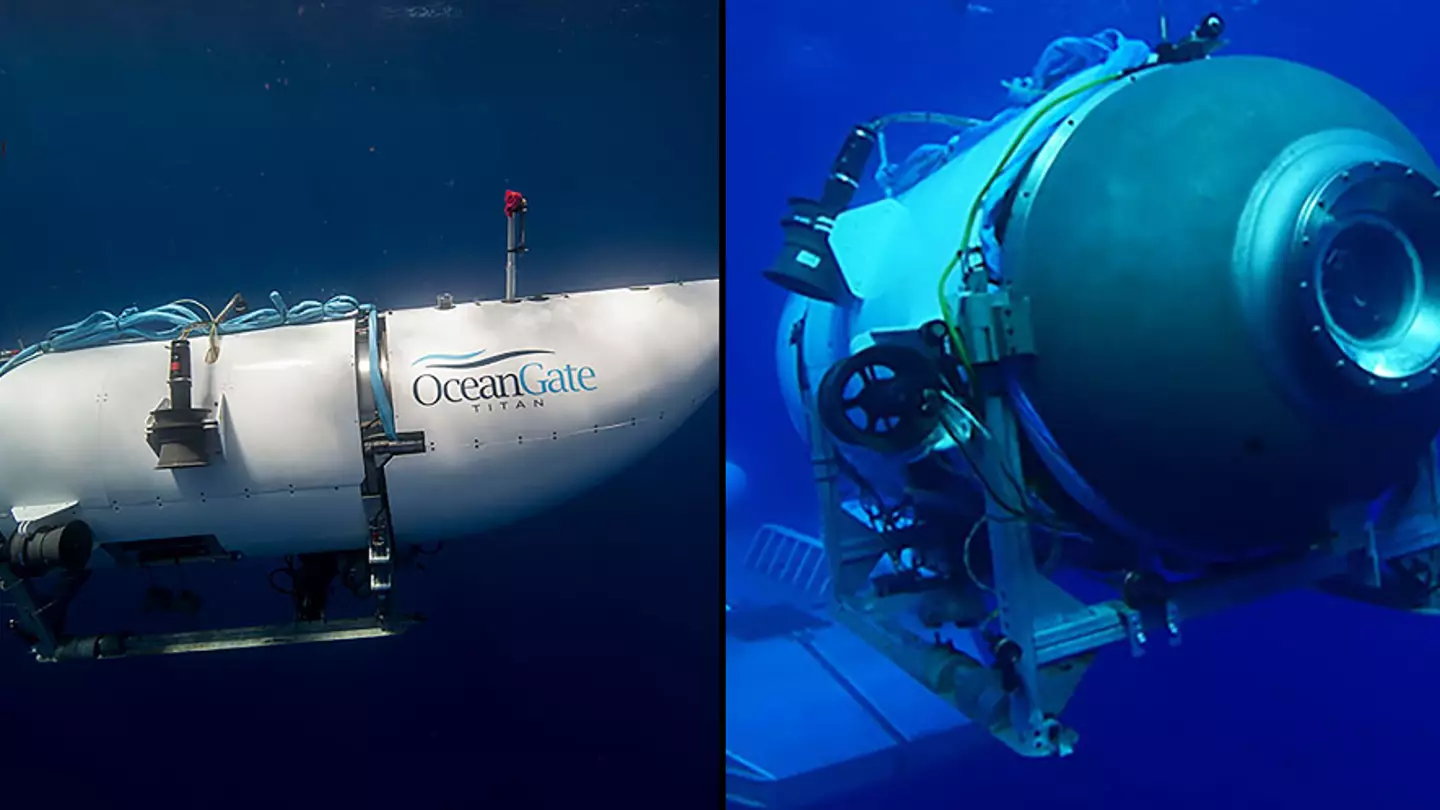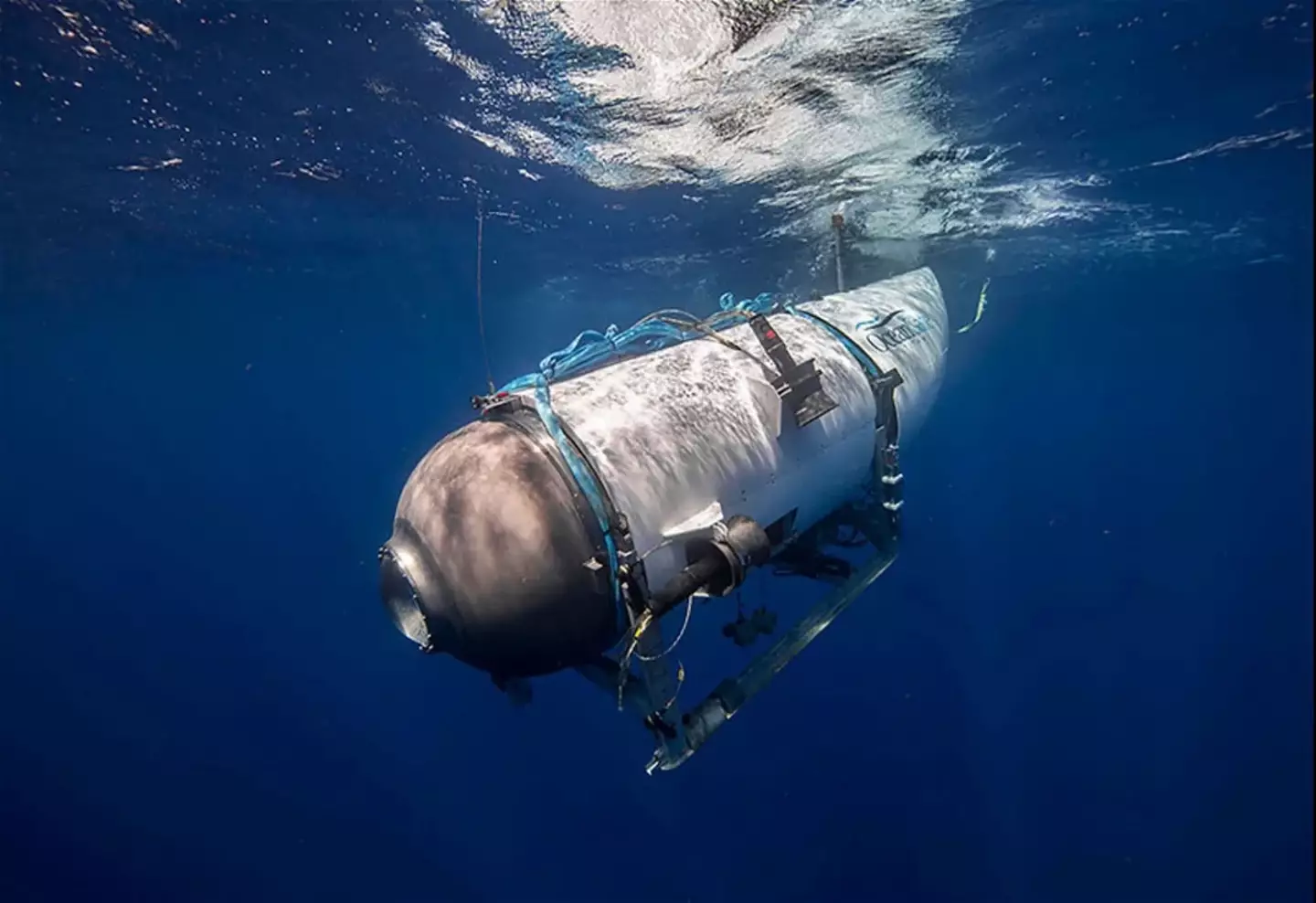
A new study may finally explain the real reason behind the fatal Titan submersible implosion.
Last June, five people died when the OceanGate vessel descended thousands of feet deep on a journey to visit the wreck of the Titanic.
Contact was lost with the sub on 18 June, prompting a huge search effort which the internet became absolutely obsessed with.
Advert
However, with the vessel’s oxygen supply predicted to have ran out on 22 June, a ‘debris field’ was discovered and it was confirmed the Titan was destroyed by a ‘catastrophic implosion’.
Hamish Harding, Paul-Henri Nargeolet, Shahzada Dawood, Suleman Dawood, and OceanGate CEO Stockton Rush were those on board.

Researchers from the University of Houston recently published a study in the Proceedings of the National Academy of Sciences, detailing their theory of why the sub imploded.
Advert
It is suggested the five men who lost their lives on the Titan sub could have been victims of ‘micro-buckling’.
The researchers theorised that small imperfections in the ‘thin-walled structure’ may have become more damaged with every trip it took to visit the Titanic before finally giving way to the ‘immense pressure’ of the ocean on the doomed trip on 18 June.
The experts examined how the ‘slenderness’ of a hemispherical shell with random imperfections is more susceptible to buckling. They also looked at the potential of micro-buckling based on the sub’s shape by using computer simulations.

One of the author’s of the study and the department chair of Civil and Environmental Engineering, Roberto Ballarini explained this to New York Post: “Buckling in the simplest explanation: you take a long spaghetti and you push on it with two fingers. What’s going to happen? It’s going to buckle essentially, it’s going to snap.
Advert
“That’s what buckling is. It’s when you compress something and it deforms by a significant amount because it’s an instability.”
The researcher did stress that their study didn’t directly examine if micro-buckling was a contributor of the OceanGate sub’s implosion, but instead looked at vessels of similar material and shape.
Before its fatal trip, the Titan sub had reportedly made over 50 dives without experiencing any issues. But it’s theorised that each of those trips might have caused developing damage to the hull.
Ballarini added that the possibility that the carbon fire composite hull had degraded in some way is something for experts to be considering.
Advert
Officials are still investigating the evidence that was successfully recovered from the Titan sub wreckage.
A timeline of the Titan submersible disaster:
The Titan loses contact with support vessel
The Polar Prince loses contact with the Titan around one hour and 45 minutes into its descent on 18 June. A few hours after the submersible was supposed to resurface, the US Coast Guard received a report of an overdue submersible.
Advert
Search operation is launched
The US Coast Guard launch a large-scale operation on 19 June 2023, when the vessel fails to resurface or make contact almost 24 hours on.
'Banging noises' are detected
Two days on from the Titan's disappearance on 21 June 2023, it's reported that sonar crews taking part in the search pick up 'banging noises', giving false hope that the passengers are still alive.
The Titan's oxygen supply 'runs out'
At 1pm E.T on 22 June 2023, the submersible's 96-hour oxygen supply is predicted to have ran out, cementing fears for the crew onboard.
A 'debris field' is discovered, leading to the realisation of a 'catastrophic implosion'
The US Coast Guard confirms the Titan was destroyed by a ‘catastrophic implosion’ - a result of both enormous water pressure and failed materials - with the loss of all five people aboard.
Featured Image Credit: PATopics: Science, Technology, Titanic, Titan Submersible, US News
